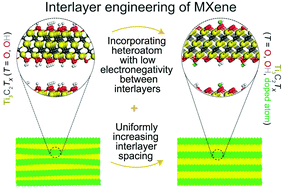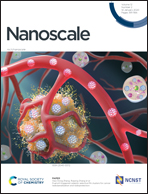Interlayer engineering of Ti3C2Tx MXenes towards high capacitance supercapacitors†
Abstract
Electrochemical pseudocapacitors store energy via intercalation or electrosorption and faradaic charge transfer with redox reactions. MXenes represent the promising intercalation pseudocapacitive electrode materials for supercapacitors due to their ultrahigh theoretical capacitances. Achieving a high capacitance will greatly advance the large-scale applications as in power grids. However, a rational design concept has not been exploited to achieve the theoretical limit. Here, we show how interlayer engineering helps to achieve the limit. Interlayer engineering in this manner simultaneously creates a broadened yet uniform interlayer spacing – providing a “highway” for fast ion diffusion, and incorporates heteroatoms with lower electronegativity – offering “trucks” (redox active sites) on such a “highway” for speeding charge transfer, enabling high capacitance. Following the concept, through annealing the as-prepared Ti3C2Tx MXene under an ammonia atmosphere, the engineered MXene delivers much improved capacitance with excellent rate performance and cyclability. The overall performance of the engineered MXene outperforms that of all other pseudocapacitive electrode materials.



 Please wait while we load your content...
Please wait while we load your content...